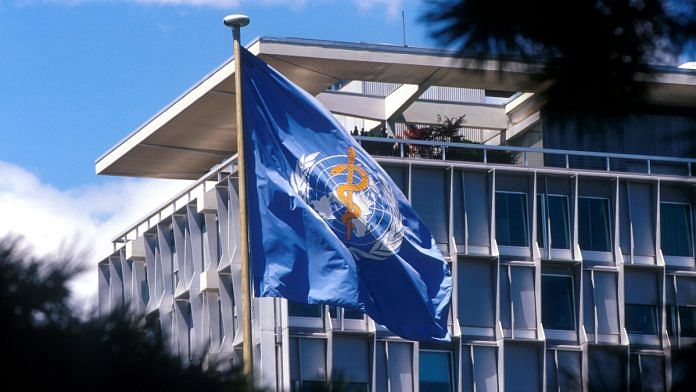New Delhi: Among his first actions as president, Joe Biden ordered the US to rejoin the World Health Organization Thursday and reversed the freeze on WHO funding, a move UN Secretary-General Antonio Guterres welcomed. In a letter, President Biden wrote that the US intended to remain “a full participant and a global leader in confronting such threats and advancing global health and health security”.
In April 2020, former President Donald Trump had halted US funding to the WHO, claiming the world body had been slow in its response to the coronavirus pandemic while also alleging it had been ‘China-centric’ in its actions. The US’ withdrawal was expected to go into effect in July 2021.
Where WHO get its funds from
The WHO gets fundings from two main sources — one, member states pay their ‘assessed contributions’, which are their membership dues, and two, voluntary contributions from member states and other partners.
Assessed contributions are a percentage of a country’s GDP that is kept relative to the country’s wealth and population. The percentage is revised every two years, which member states get approved at the World Health Assembly.
Voluntary contributions are, typically, from member states as well as other UN organisations, intergovernmental organisations, private sector and other donors.
According to information uploaded by the WHO, voluntary donations from member states make up the lion’s share of contributions — 76.46 per cent of the budget — while assessed contributions are 17.39 per cent.
Also read: From passivity to pandemic: A timeline of Dr WHO’s failure
Funds allocation
For 2020-21, the current approved Biennium Programme Budget is $5.84 billion. Owing to the coronavirus pandemic outbreak, funds were increased to address the crisis.
The WHO budget has four segments. A base budget, which is the largest component, covers the work done across the organisation and enables functioning of all the offices.
A segment is allocated for ‘special programmes’ such as UNICEF, UNDP, World Bank, UNFPA etc. In addition to these, the budget is also allocated to programmes like Special Programme for Research and Training in Tropical Diseases, the Special Programme of Research and the Pandemic Influenza preparedness framework.
Another is allocated for the Global Polio Eradication Initiative, which is a public-private partnership led by national governments with five partners — WHO, Rotary International, US Centers for Disease Control and Prevention, UNICEF, Bill and Melinda Gates Foundation and Gavi The Vaccine Alliance.
A fourth segment is allocated for emergency operations and appeals that respond to disasters that could cause public health consequences.
In 2020-21, $3,768.7 million was allocated for the base budget, $863 million for polio eradication and $208.7 million for special programmes.
African countries received $1.6 billion for WHO projects, Southeast Asia got $375 million, and the US was given $62.2 million.
Also read: When fate of the world’s health rested between China and Trump — right where WHO was stuck
How Trump’s freeze would have affected WHO
The WHO would have been severely impacted by Trump’s freeze, given that the US is the largest single government donor to the organisation.
According to WHO’s website, US funding accounts for 15.18 per cent of the overall budget.
Lawrence Gostin, a law professor at Georgetown University, told NPR: “The US is the largest single government donor in the world … So WHO’s budget does rely very much on US contributions.”
In the two-budget cycle of 2018 and 2019, the US contributed $656 million in voluntary contributions, out of which, $158 million was allotted for polio eradication, $100 million increased access to essential health and nutrition services, $44 million was directed towards vaccine-preventable diseases and $33 million for tuberculosis treatment programme.
WHO involvement in India
The WHO-India Country Cooperation Strategy (CCS) was developed collectively by India’s health ministry and WHO India. The CCS strives to quicken the progress on Universal Health Coverage, and increase preparedness for health emergencies.
India became a part of the WHO Constitution on 12 January 1948. The first session of the WHO Regional Committee for South Asia was held from 4 to 5 October 1948 and was inaugurated by Jawaharlal Nehru, who was the prime minister at the time.
WHO has been an integral partner in aiding India in its immunisation programme against tuberculosis, leprosy and kala azar, a parasitic disease.
Its office in the country focuses on six core functions. These include providing leadership on healthcare matters; shaping research agenda and stimulating translation and dissemination of knowledge; setting standards and monitoring implementation of programmes; coming up with evidence-based policymaking; providing technical support and helping build institutional capacity; and monitoring and assessing larger health trends.
India contributes 0.48 per cent to WHO’s budget.
Also read: China kept WHO ‘in the dark’ in early days of Covid pandemic, delayed data release: AP expose



